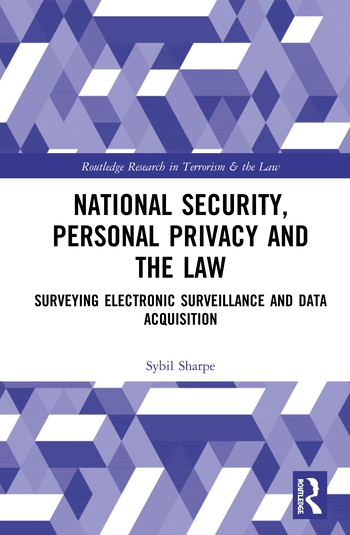The Good and Bad of Protecting the Goods

Maybe it’s because the area can often cover thousands of square feet. But securing a warehouse or distribution facility can be challenging and complex. In March, thieves scaled a wall at an Eli Lilly warehouse, where they cut a hole in the roof and rappelled inside to steal about $70 million in antidepressants and other prescription drugs. The thieves disabled the security alarm and then loaded pallets of drugs into a waiting vehicle at the warehouse’s loading dock.
In a separate case, burglars broke into a Dania Beach, Fla. business last month so they could cut through a wall and steal $25,000 in electronics from the warehouse next door. The burglars broke into Hydyne Motorsports, a new business whose warehouse was empty, and once inside, the men broke through the sheetrock in a bathroom door so they could get into Worldwide Car Accessories next door and steal car electronics.
In both cases, the incidents were reported immediately. But some warehouse losses can go unreported for days or sometimes weeks, if not found or reported.
Many security professionals believe that a multilayered approach that considers a company commitment to the security program, training, and both high-tech and low-tech technologies is the best solution.
For example, John Martinicky, director of corporate security for Navistar, says, “Our warehouses like most warehouses have a large real estate footprint, with high value parts, with a relatively small staff, so our challenges are to engage local management and employees including contractors to be security conscience, ensure visibility of security through regularly scheduled security audits, training and communications and to keep up with security technology and compliance with Navistar’s policies and programs.”
Martinicky and his staff, using a risk model, designs a security plan for each Navistar facility. The basic program for all facilities includes security video, local DVR recording with remote viewing, intrusion detection, access control, visitor management, fire/smoke detection and suppression, information protection, lighting and control of visitors, employees and customers through environmental design. “We use online and live training, weekly pop up security messages on computers, hand outs and flyers, regular communication and global security investigation of all significant incidents reported,” he says.
“We also use National Center for Crisis and Continuity Coordination and weather data for external notifications and to manage external threats and or evacuations that are part of our business continuity plans.”
The strategy has been successful. Through a security tracking and reporting system and a system hardware equipment log, “over a historical period of time we can show that facilities with our full programs in place have reduced incidents from loss and accidents as well as decrease in severity of the incidents that do occur,” he says. “This all translates in a value and ROI though risk reduction and cost avoidance.”
Value and return on investment can also be an outcome of holistic approaches to supply chain security.
Jos Giele, senior manager of global security for Con-way, Inc., says that each day his organization faces challenges related to delivering and maintaining a holistic security program that meets U.S. Department of Homeland Security and other domestic and international regulatory commitments. “Our business can be a target of identified threats such as theft and burglary,” he says. “So our concerns are related to risk mitigation in general, including mitigating risks for our staff, company and customers, ensuring business continuity of all our operations and safeguarding the customer’s and company’s assets.”
Jos Giele, senior manager of global security for Con-way, Inc., says that each day his organization faces challenges related to delivering and maintaining a holistic security program that meets U.S. Department of Homeland Security and other domestic and international regulatory commitments. “Our business can be a target of identified threats such as theft and burglary,” he says. “So our concerns are related to risk mitigation in general, including mitigating risks for our staff, company and customers, ensuring business continuity of all our operations and safeguarding the customer’s and company’s assets.”
Con-way Inc. is a $4.3 billion freight transportation and logistics services company headquartered in San Mateo, Calif. The company delivers products and services through its operating companies, in addition to providing logistics, warehousing and supply chain management services and trailer manufacturing. Con-way and its ssubsidiaries, such as Menlo Worldwide Logistics, have more than 440 operating locations across North America and in 18 countries across five continents.
“Our security program is very clear as to what we are addressing, but any measures taken will still be a business decision,” he says. “Thankfully, the focus of the entire company is in line with our security program; yet it is also our responsibility to meet each other in a constructive and efficient way to make r a solid and sensible investment. You cannot spend money if you don’t have the budget for it. But here, security is an integral part of the overall company philosophy. A full picture with all stakeholders, identified support, escalation processes, and follow-up with motivators for all is the only way to identify gaps and decrease possible risks with a zero tolerance.”
Giele and his staff use a variety of security technologies such as access control, alarm intrusion detection and security video that is tailor made to the needs of the facility and its operations. “We all have company photo IDs, and we use biometrics like palm screening. Our employees understand the security plan, so they see the full picture and the benefits of using biometric screening,” he says.
Yet, he adds, “A good balance of all possible technology lies in the hands of the people who work with or in cooperation with the technology itself. Their commitment in close relation with a decent but again, tailor made technology will ensure a solid and reliable structure. The technology needs to provide and generate a quick alert, when someone or something wants to influence our business and/or operation in a negative way. Staff need to be trained to be able to understand the system and needed response in full compliance with each other.
“What we value more is training to use the technology in the best possible way,” he adds. “You can buy the most expensive lock for the door, but if no one understands how to use it, it’s useless. So it’s a combination of technology with the understanding of how to use it by the people who are using it.”
Unique Threats to Specific Locations
Tom Halzelton, security director for Coca-Cola Bottling in Charlotte, N.C., says that one of his biggest concerns is extortion and fraud in his warehouse. “Protecting the integrity of the consumer franchise and our brand from external threats has been a huge challenge during tough economic times,” he says. “Extortion and tampering have risen over the last several years, which have driven change within our bottling processes and manufacturing deliverables.” He adds that preparing and training for SQF (safe quality food) and food defense plans at manufacturing plants and distribution centers has transformed his current security program. “With these new requirements by the Government and by our customers, it has been vital to partner with quality security vendors to include electronic and physical security, because they play such an important role with these new initiatives.”
While some face new challenges, some routine threats remain.
According to Bill Taylor, security manager for Gilette’s South Boston manufacturing center, his top three concerns are access control of persons and employees into his facility; workplace violence due to increased levels of employee stress due to the economy and business related decisions affecting where work will be done; and maintaining the physical security of the site, which is located in a large metropolitan area.
For access control, he requires ID badges for all permanent employees with access limited to only those areas they are authorized to enter. In addition, all visitors must sign in/out and be escorted by an employee while on site; contractors must sign in/out to comply with site safety policies and procedures while on site.
He has worked with the company’s human resources department to conduct workplace violence training for managers and supervisors. It stresses ethical behavior and stewardship in which people are valued and respected and violence and bullying are not tolerated.
In order to maintain both interior and exterior security, he uses security patrols that are highly visible to all, restricts access to the site after normal business hours and weekends, uses security video and digital recordings to track and review incidents as they occur and uses GPS tracking and driver call ins to track high-value cargoes that move between company facilities.
“We currently have an approved capital project to install one man door on site that will allow greater employee flexibility while reducing security manning, saving about $100,000 per year for the site.”
Changing the Culture
“Maybe it’s a cultural thing, but what I find frustrating is the lack of information or communication when something is missing from a warehouse,” says Brian Miller, security manager for Beckman Coulter in Chaska, Minn. “If you wait too long, chances are you won’t find the product or who is responsible.” The company makes biomedical laboratory instruments and immunoassay reagents that are used in hospitals and other critical care settings around the world and produce information used by physicians to diagnose disease, make treatment decisions and monitor patients.Miller, who has seven security personnel working with him, says that a good portion of his job is educating employees to speak up. “When we get reports of parts missing two hours ago, versus two days ago, it narrows down who we need to speak with. It’s all about developing a culture of communication. Getting people to feel like they can talk to you is a challenge. We try to change that culture from day one, to open the communication lines for people to relay the information, at a minimum to their supervisor or manager and help them to feel more empowered.”
Part of that culture change involved Miller educating upper management about limiting employee access to areas which they don’t need to be in. “One of the pushes by management recently was to have an open campus,” he says. “I fought hard against that and we now have restricted access. A new employee has to be trained as to which areas they are allowed and a supervisor has to approve it. It reduces the quantity of people who have access and prevents people from wandering around and causing problems, either on purpose or by accident.
“It’s a juggling act regarding how much time you spend versus the likelihood that something might occur,” he adds. “I believe that people expect to work in a safe environment. And you also need to be consistent with that philosophy from location to location. So we’ve standardized some of the basic security related protocols and guidelines to create a safe place to work.”
Railway Security Trends
Securing the supply chain, in particular the railway, which moves commodities from point A to point B to point C, is multi-faceted and involves all levels of risk. Continuity of the business processes, as well as the safety and security of the people involved in those processes, is what’s at stake.The security equipment deployed at railways needs to not only provide an effective deterrent but must also allow customers to get where they are going in an efficient, reasonable manner. Any security system also needs to be flexible and capable of being adapted to work efficiently and effectively in more than one environment.
Yet, budget and technology understanding still remain major hurdles that need to be overcome for further rollout of video surveillance cameras in the rail sector. As international trade continues to expand, the global supply chain remains even more vulnerable to security threats, says a report by IMS Research.
According to Paul Everett, research director for access control, fire & security for IMS Research, the research shows “the overwhelming majority of rail security managers felt more comfortable and confident in receiving information from their industry peers than from the sales managers of equipment manufacturers. In addition, rail operators in the U.S. are not against integration of disparate security systems; however, a large number felt that there were other projects which required more urgent attention.”
Other important information from the research includes:
• Funding is so important to the future roll-out of technology that every effort needs to be made to match the requirements laid down by the TSA.
• Vendors need to be able to gain as much credibility in the rail environment as possible; and they need to be looking for opportunities to do beta testing, and to verify the operation of their technology. Manufacturers should also look to partner with a transit organization, or even the federal government, as a means to gain credibility, Everett says.
• U.S. rail operators are requesting the option of having cameras on the exterior of trains to help with accident claim information.
• In some instances rail operators are requesting the option of monitoring the train driver, so there is also now a management aspect to the mobile video surveillance solution.
• Some rail operators have taken a different angle to the use of mobile DVRs, using them for advertising media only. This is only a specific example, Everett notes, but it highlights an opportunity to maximize the investment in technology, by using the same equipment for both advertising and security, if possible.
• Many of the leading rail operators interviewed for the report that were not yet using onboard video surveillance equipment were very positive about the technology, and had more confidence in this than in other areas, such as video analytics.
• For train operators, the prime concern is, and will remain, getting a reliable service to the public. However, security is now becoming more important, Everett says.
• Train operators do not want to see banks of cameras and monitors that people have to watch. They want to be able to scan through and use the video surveillance to prevent an event occurring rather than act after the event. Being proactive rather than reactive is where rail security managers want to be.
• Funding is so important to the future roll-out of technology that every effort needs to be made to match the requirements laid down by the TSA.
• Vendors need to be able to gain as much credibility in the rail environment as possible; and they need to be looking for opportunities to do beta testing, and to verify the operation of their technology. Manufacturers should also look to partner with a transit organization, or even the federal government, as a means to gain credibility, Everett says.
• U.S. rail operators are requesting the option of having cameras on the exterior of trains to help with accident claim information.
• In some instances rail operators are requesting the option of monitoring the train driver, so there is also now a management aspect to the mobile video surveillance solution.
• Some rail operators have taken a different angle to the use of mobile DVRs, using them for advertising media only. This is only a specific example, Everett notes, but it highlights an opportunity to maximize the investment in technology, by using the same equipment for both advertising and security, if possible.
• Many of the leading rail operators interviewed for the report that were not yet using onboard video surveillance equipment were very positive about the technology, and had more confidence in this than in other areas, such as video analytics.
• For train operators, the prime concern is, and will remain, getting a reliable service to the public. However, security is now becoming more important, Everett says.
• Train operators do not want to see banks of cameras and monitors that people have to watch. They want to be able to scan through and use the video surveillance to prevent an event occurring rather than act after the event. Being proactive rather than reactive is where rail security managers want to be.
Looking for a reprint of this article?
From high-res PDFs to custom plaques, order your copy today!







